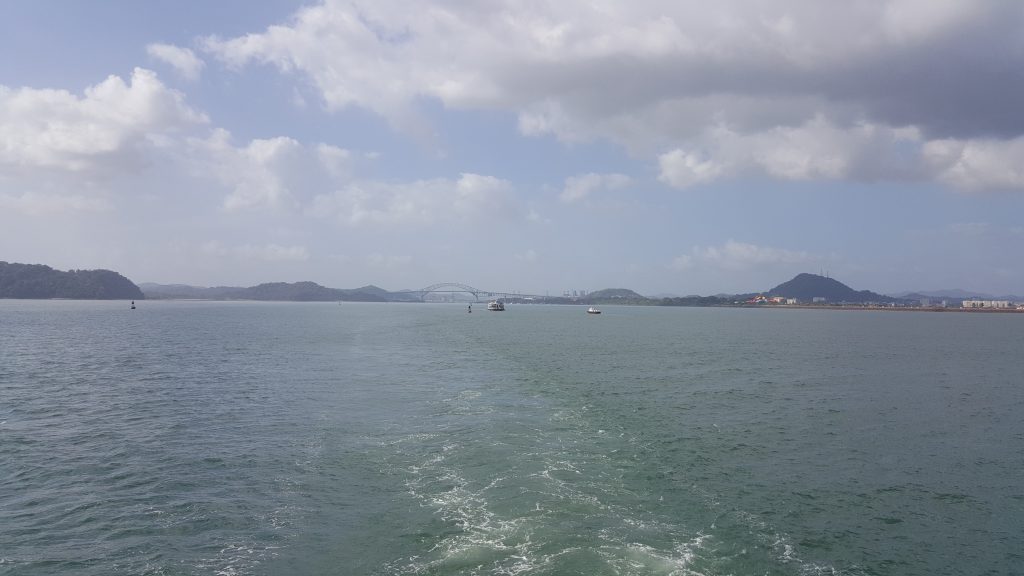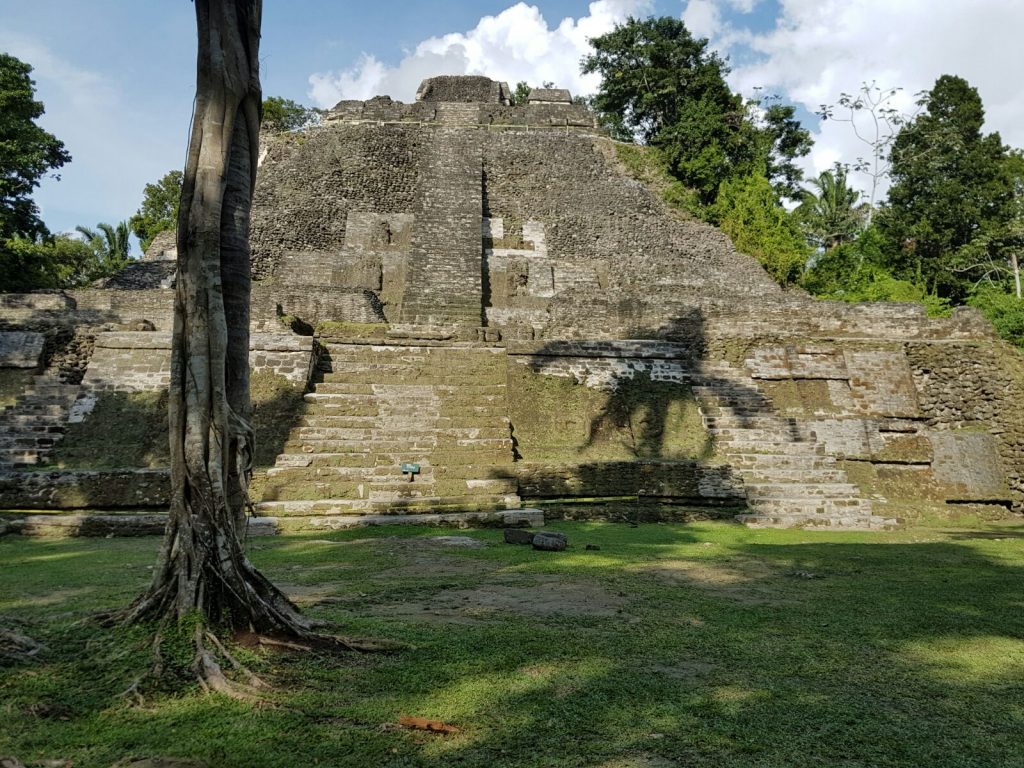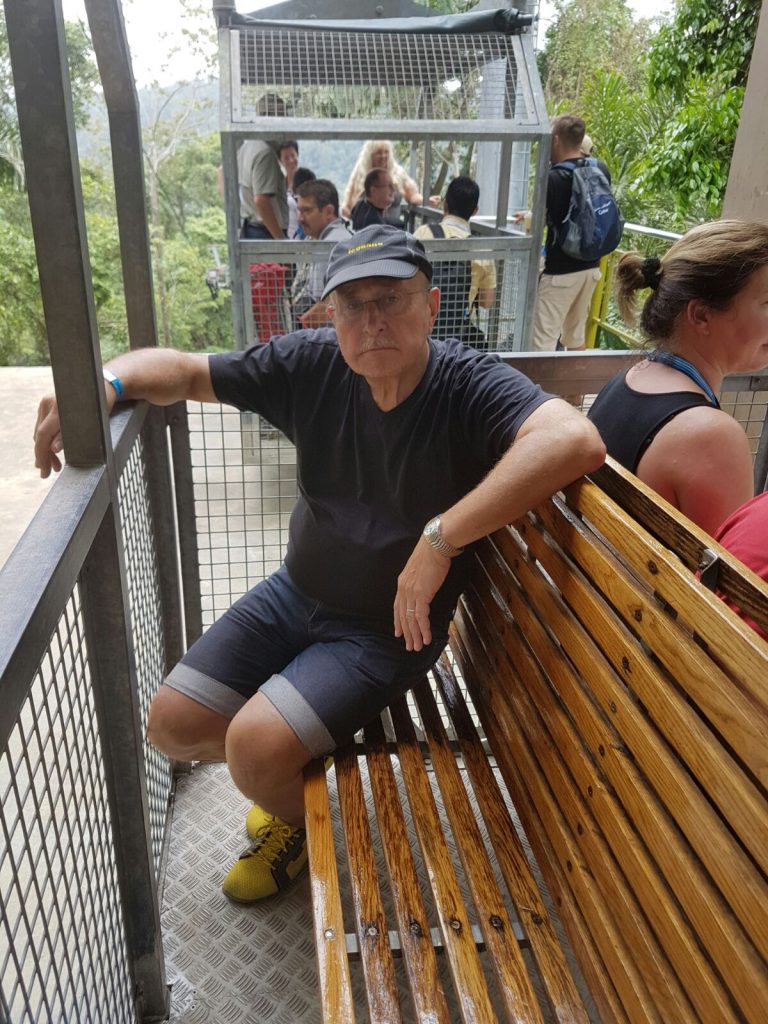In my last post, I started telling you about my last trip through the Caribbean under the title Travelling in Central America (Unterwegs in Mittelamerika). One of the surprises that made me happiest was that I found three countries that have no federal destruction machinery, also known as army or military system.

A short trip through the Panama Channel in a pleasure boat. On the horizon, only just visible, you can see the Puente de las Américas, which was opened on October, 12th, 1962. Having an open height of 61 metres, it is still not high enough for some ocean giants.
Actually, one of my dreams is to live in a country that decides not to have an army and consequently will also do without the elements that go with an army, such as weapons industry, compulsory service and/or mercenary armies, etc. That would be a country that has no ministry of war or defence and no soldiers who work machines the sole purpose of which it is to kill humans and destroy cities.
I still find it regrettable that, immediately after WW-2, the Adenauer administration purposefully and secretly worked towards a re-armament, regardless of the fact that the German Parliament had refused a national re-armament in its first state debate on November, 24th and 25th, 1949. See also the article on the Himmeroder Denkschrift (and especially the part about the Himmeroder Expertengruppe).
Let me cite Wikipedia:
In May 1950, keeping it top secret, Adenauer had instituted an office under his military advisor, General Gerhard Graf von Schwerin. Its official name was Zentrale für Heimatdienst (ZfH) and its task was to select former officers, generals and admirals of the three military sectors who were “unblemished” and some of whom could be counted among the military resistance against Hitler in the broadest sense of the word. From this group, a team of German experts for military expert exchange with the allied forces was to be established. They were also to represent Germany in negotiations with allied partners. Regardless, some of them were subjected to intense criticism.
As early as April, 25th, 1953, Adenauer had reached his goal and the re-armament of the FRG was a foregone conclusion. It was probably in reaction to this that the Nationale Volksarmee (NVA) was established on January, 18th, 1956.
Back to Central America:

I had already known that Belize was a country without an army. However, I was surprised to learn that the same was true for Costa Rica and Panama. During discussions, I had long been in the habit of mentioning Belize as an example for a country without army. At the time, my argument in the discussion was always countered by others saying that, basically, Belize was just a (hidden) colony of the USA.
That is why I intended to talk to the people living there about the topics #NoArmy and the US dominance. And I was surprised to see how all the people I talked with in these three countries felt not having an army was really something very positive.
Regardless, I can well imagine that the CIA controls these countries. However, the people living there I talked to denied this. To me, they all seemed to be very independent and democratic. They pointed out that their country lives in peace with all other countries of Central America and the rest of the world.
Neither could I detect a US dominance as far as business is concerned. As everywhere, the cars, busses and trucks were from Asia and the EURO was just as welcome as the USD.

Our female guide in Costa Rica who accompanied us during a trip starting from the Puerto Limón was able to describe the situation very precisely. She remained in Costa Rica after having been on vacation there. Today, she is a young grandmother, living with her big family and working in charitable projects that want to support soft tourism that will eventually channel the money into the right hands.
But our time in Belize also quite exciting. This is where I noticed that there is still a lot of British colonialism. Belize was also the only country on our trip where the cars were driving on the left side. In Panama, I saw a truly healthy national pride. At least judging by what I felt, the people and the country were not at all controlled by the USA.
But even if this were not true: I personally would prefer being a little under US colonialism to having an army.
This is how the three countries have again become real valid examples for the fact that it is possible to do without an army and probably even to do better without. And this is how, for me, the Puente de las Américas became a symbol of hope and for a peaceful future without weapons.
RMD
(Translated by EG)

